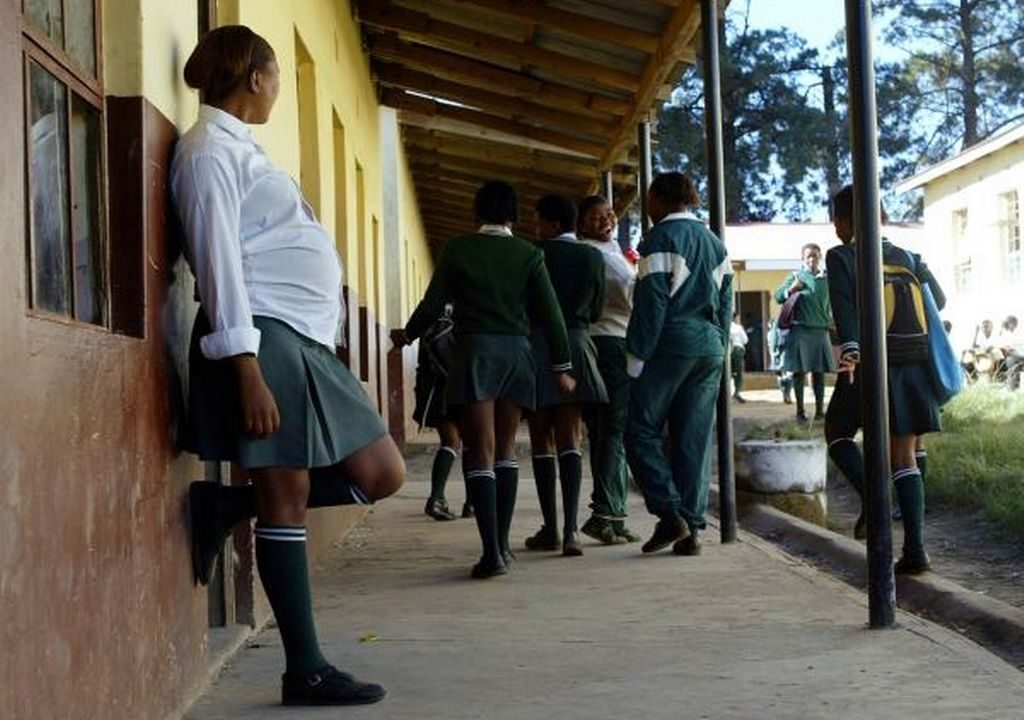
Pregnancies among adolescent girls remain a global problem. An estimated 21 million girls aged 15–19 years in developing countries become pregnant and about 12 million of them give birth every year.
Pregnancies not only have adverse health risks for adolescent mothers and their babies – these problems can persist into the next generation. For example, girls who become pregnant often drop out of school, limiting their future economic opportunities and perpetuating a cycle of poverty.
South Africa recorded increased rates of teenage pregnancies in some parts of the country between 2018 and 2019 and more recently during the COVID-19 pandemic. This was partly due to the difficulty of accessing contraceptives, which was greater during the COVID-19 lockdown.
An increase in the adolescent pregnancy rate strongly suggests challenges with accessing sexual and reproductive healthcare services for this vulnerable age group and is a cause for concern.
Drivers of teenage pregnancy
Even before the pandemic, in South Africa, 16% of young women aged 15-19 had begun childbearing. The figure ranges between 11% In urban areas and 19% in rural areas.
One factor that has contributed to this is violence against women and girls. In South Africa, one in three women experience gender-based violence and one in five children under the age of 18 experienced sexual abuse.
Deficiencies in the health system also contribute to teenage pregnancies. It’s not always easy for adolescents to get contraceptives if services aren’t youth-friendly.
Education about contraception for adolescents is inadequate too.
In South Africa, 31% of girls aged 15 to 19 aren’t getting the contraceptives they need – a bigger proportion of this age group than other age groups.
Our research has focused on health systems factors that are associated with access and use of contraception among adolescent girls and young women. If these factors aren’t attended to, the needs and rights of adolescents could remain neglected even after the pandemic ends. The rate of unwanted early pregnancies could remain high, affecting the health and life choices of young women and their children.
The research
We conducted two separate studies as part of an evaluation of a South African combination HIV prevention programme for adolescent girls and young women. Our research took place from 2017 to 2018 and from 2020 until 2021.
The first survey, conducted in 2017 and 2018, included 4,425 adolescent girls and young women aged 15 to 24 years living in six districts across five provinces in South Africa. The second survey, in 2020-2021, included 515 adolescent girls and young women.
These two studies revealed a worryingly high rate of pregnancy in this age group. We also found that most (70%) of the pregnancies were not planned.
The survey found that 68.4% had ever had sex and 9% reported having had sex before the age of 15. Among the group who had ever had sex, 36.2% said their first pregnancy had occurred before they were 18.
Our findings show that adolescent girls and young women have a high unmet need for contraception and that health system barriers to contraception services persist. Only 48% of the respondents said they’d ever used a modern contraceptive.
Use of condoms the last time the respondents had sex was reported by 51%. This means half of the adolescent girls and young women were at risk of being infected with HIV or any sexually transmitted infection, or passing an infection on.
Interviews revealed that many young women, especially in the age group 15–19 years, found it difficult to get contraceptives. We found that they didn’t have information about contraceptives. Many didn’t know how the different methods work and affect the body. Some believed that contraceptives were not good for the body, based on myths and misinformation. Some believed contraceptives didn’t work at all.
Misinformation and barriers
Some of the respondents said contraception would ruin their wombs and, in the future, they would not be able to have children. Many lacked support to use contraceptives from parents or other caregivers.
They said that health workers asked them embarrassing questions and mistreated them:
The nurses will start asking all sorts of questions; why are you here? Young as you are! Do you have a boyfriend? And because of these questions and that you feel embarrassed you end up leaving without accessing the services …
They won’t speak to you privately in a room, instead they will loudly say why are you here for contraceptives in front of people and you can imagine how many people are at the clinic.
In the second survey, among those who reported they had sex in the year before the survey, only 28% reported using contraceptives consistently.
The reasons included disliking the side effects; running out of contraceptives; inconvenient health service opening hours; stock-outs at the health service; and the COVID-19 pandemic.
During the past year 22% of the respondents said they had been unable to get the contraceptives they needed. And 21% reported challenges getting condoms because of COVID-19 and the lockdown.
Going forward
School-based interventions could be part of the effort to prevent sexual violence and raise awareness about adolescents’ sexual and reproductive health and rights.
Health system interventions and education campaigns to address the socio-cultural beliefs and misinformation that undermine use of contraceptives are needed too.
Free contraceptives should be available not only in health facilities but in safe spaces such as school, community settings and retail pharmacies. Health workers should discuss the concerns and needs of adolescent girls and young women with them and help them find the contraceptive method that suits them.
Finally, evidence shows that provision of incentives to promote adherence to medication is a promising strategy. For example, people could get money for transport or mobile data to get health information. This might promote access and consistent use of contraceptives among adolescent girls and young women.

